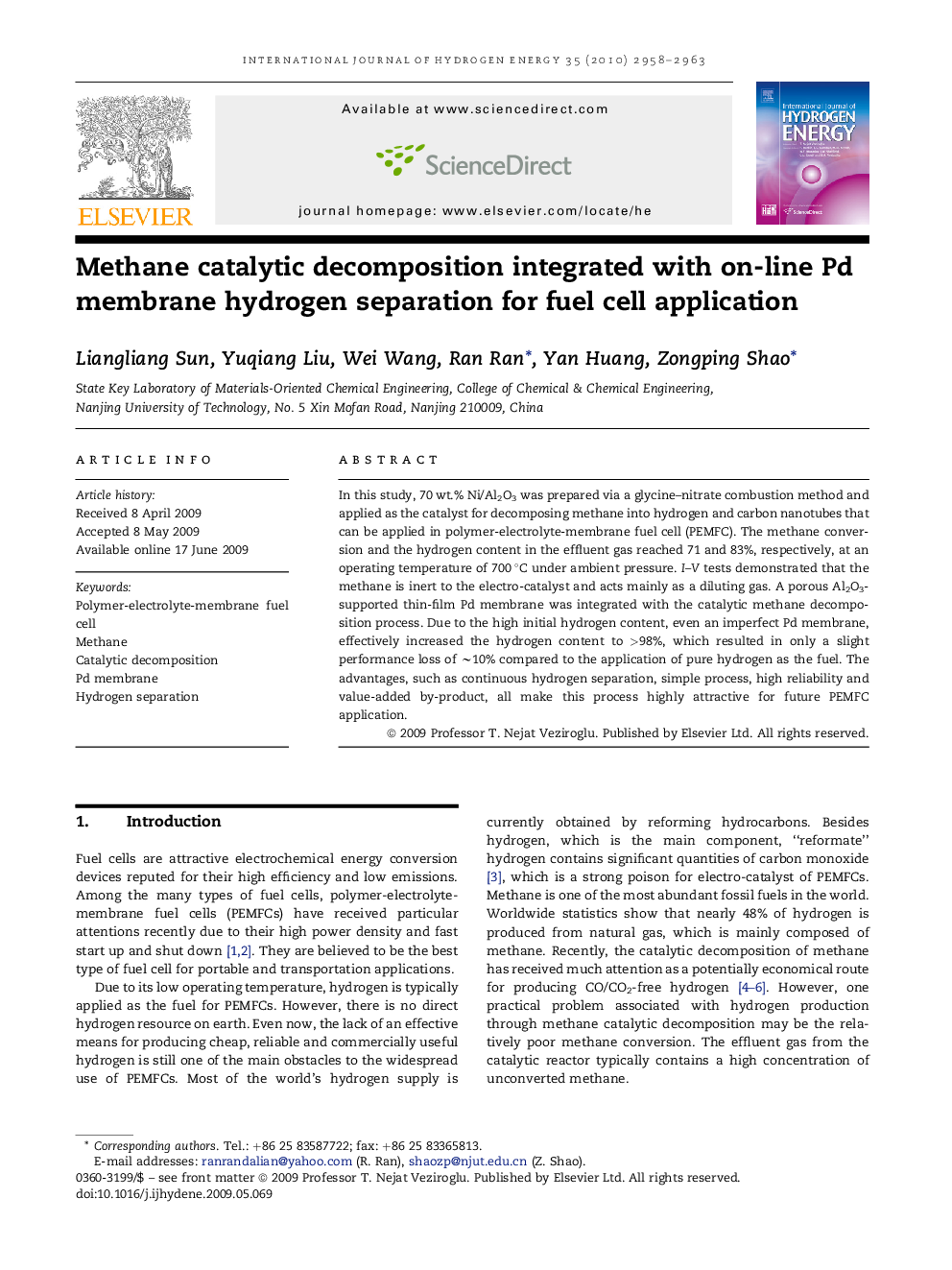| Article ID | Journal | Published Year | Pages | File Type |
|---|---|---|---|---|
| 1273288 | International Journal of Hydrogen Energy | 2010 | 6 Pages |
In this study, 70 wt.% Ni/Al2O3 was prepared via a glycine–nitrate combustion method and applied as the catalyst for decomposing methane into hydrogen and carbon nanotubes that can be applied in polymer-electrolyte-membrane fuel cell (PEMFC). The methane conversion and the hydrogen content in the effluent gas reached 71 and 83%, respectively, at an operating temperature of 700 °C under ambient pressure. I–V tests demonstrated that the methane is inert to the electro-catalyst and acts mainly as a diluting gas. A porous Al2O3-supported thin-film Pd membrane was integrated with the catalytic methane decomposition process. Due to the high initial hydrogen content, even an imperfect Pd membrane, effectively increased the hydrogen content to >98%, which resulted in only a slight performance loss of ∼10% compared to the application of pure hydrogen as the fuel. The advantages, such as continuous hydrogen separation, simple process, high reliability and value-added by-product, all make this process highly attractive for future PEMFC application.
